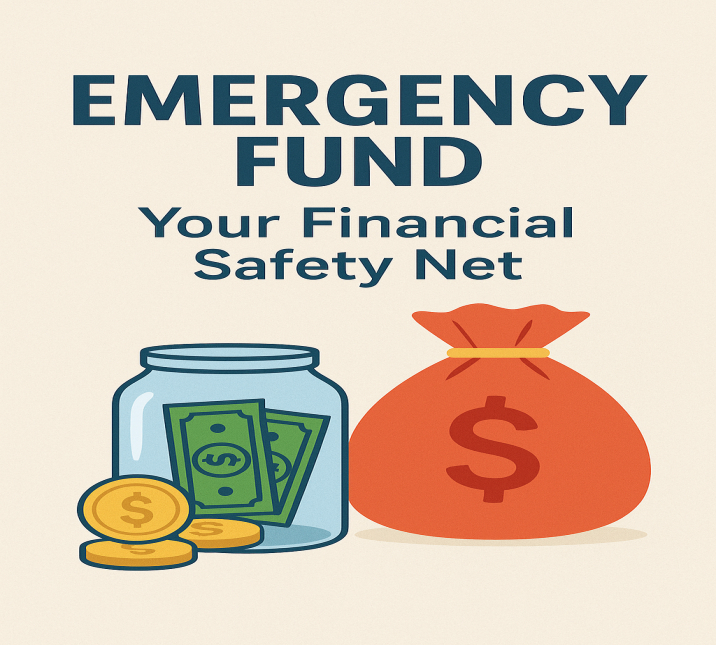What is an Emergency Fund and Why It’s Essential for Financial Security, Full details 2025 updated.
What is an Emergency Fund and Why Having one is Essential
Financial emergencies can knock on your door when you least expect them, job loss, medical expenses, urgent home repairs, or even sudden travel needs. Without a safety net, these situations can derail your finances and push you into debt. That’s where an emergency fund comes in.
Table of Contents
What is an Emergency Fund?
An emergency fund is a pool of money you set aside to cover unexpected expenses. It’s not meant for planned purchases like vacations or new gadgets, it’s your financial shield during crises.
Think of it as your “in case of emergency, break glass” savings account.
Why is an Emergency Fund Important?
- Financial Security in Uncertain Times
Life is unpredictable. An emergency fund prepares you to handle unexpected costs without turning to credit cards or borrowing money. - Avoids High-Interest Debt
Without savings, most people turn to credit cards or personal loans in emergencies — both come with high interest rates. Your fund keeps you debt-free. - Peace of Mind
Knowing you have money set aside reduces financial anxiety, even if you never use it. - Helps You Stay on Track With Goals
Emergencies can disrupt long-term savings plans. With a dedicated fund, you won’t have to dip into your retirement corpus or investment portfolio.
Ideal Amount to Keep in Your Emergency Fund?
A good rule of thumb is to save at least 3–6 months of your living expenses.
- If you have a stable job and few dependents → 3 months may be enough.
- If you’re self-employed or have dependents → aim for 6 months or more.
Where Should You Keep Your Emergency Fund?
Your emergency fund should be:
- Easily Accessible: Savings account, liquid mutual fund, or a short-term fixed deposit.
- Safe: Don’t invest it in stocks or volatile assets — the value shouldn’t drop during a crisis.
- Separate From Your Regular Savings: Keeps you from using it for non-emergencies.
How to Build an Emergency Fund Step-by-Step
- Set a Target Amount
Calculate your monthly expenses and multiply by 3–6 months. - Start Small, Stay Consistent
Even ₹1,000–₹2,000 per month adds up over time. Automate transfers to your emergency fund account. - Cut Unnecessary Expenses
Direct the money you save from eating out less, cancelling unused subscriptions, or reducing shopping towards your fund. - Use Bonuses and Windfalls
Allocate a portion of work bonuses, tax refunds, or side hustle income directly to your fund. - Review and Refill
If you use any amount from the fund, refill it as soon as possible.
When to Use Your Emergency Fund
Only use it for:
- Medical emergencies
- Job loss or income drop
- Urgent home or car repairs
- Unexpected travel due to family emergencies
Not for:
- Vacations
- Shopping sales
- Down payments for planned purchases
Final Thoughts
An emergency fund is not just a savings account, it’s your personal insurance policy against life’s surprises. Start building one today, even if it’s small. Over time, it will grow into a strong financial safety net, giving you peace of mind and freedom from debt.
Remember: It’s better to have it and not need it than to need it and not have it.

